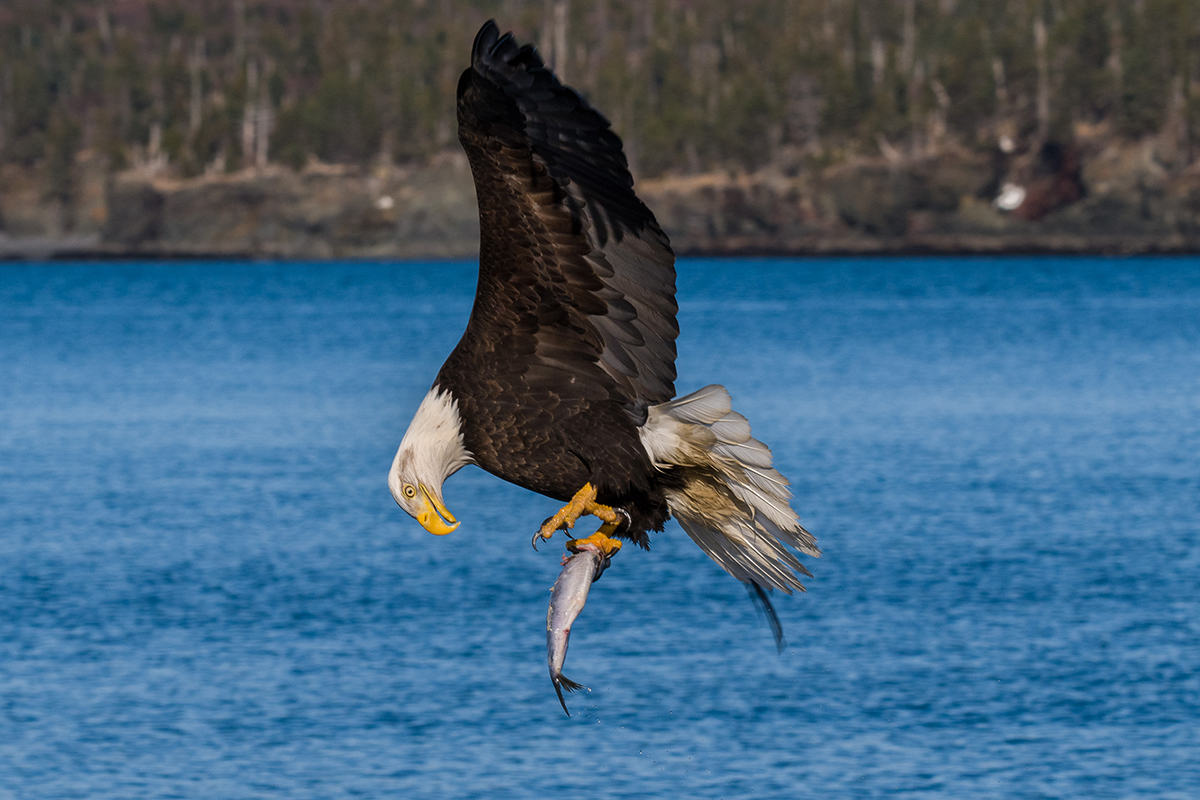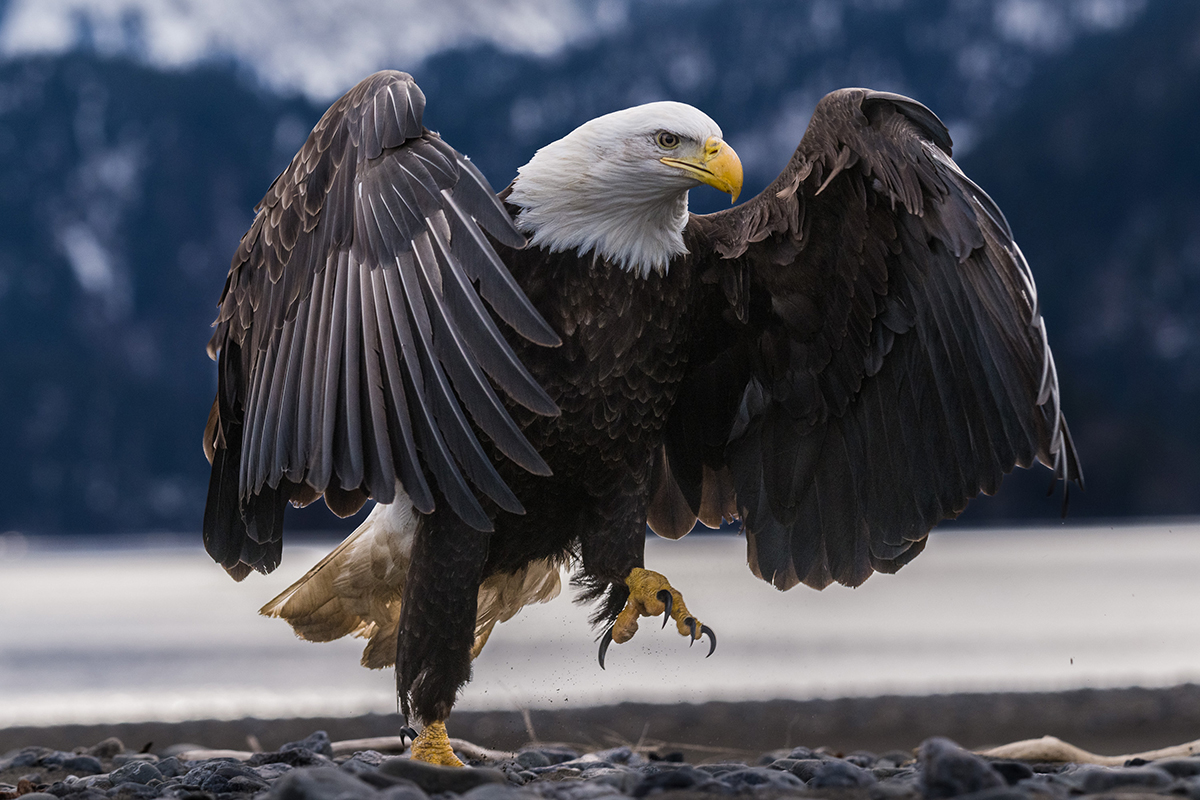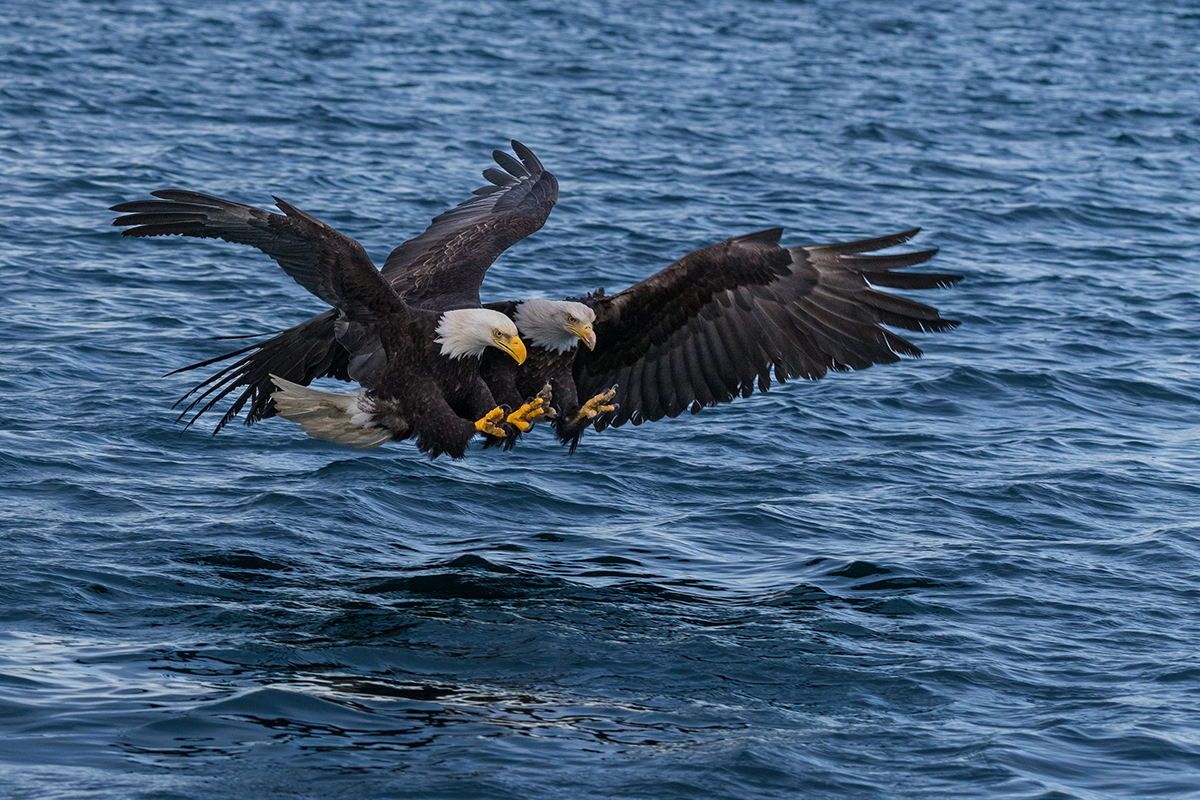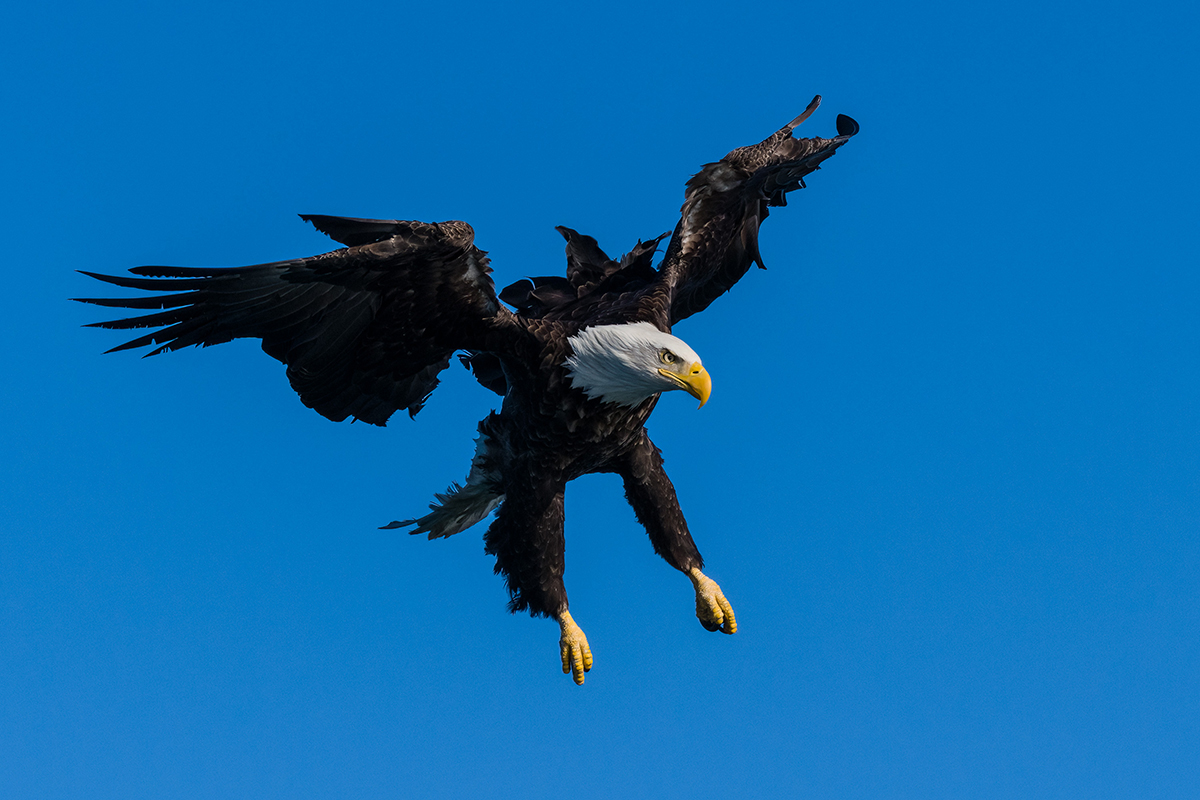La transición de una DSLR a una cámara sin espejo llevaba tiempo rondándome por la cabeza. Como muchos fotógrafos, dudaba, sobre todo porque no estaba seguro de cómo funcionarían mis objetivos Tamron de confianza con un adaptador. ¿Funcionaría bien el enfoque automático? ¿Se resentiría la nitidez de la imagen, especialmente al fotografiar águilas u otros animales que se mueven rápidamente?
Después de dos meses y casi 28.000 imágenes, puedo decir con confianza que esas preocupaciones eran infundadas. De hecho, mis objetivos Tamron funcionan mejor que nunca.
Lo que aprenderá en este artículo:
- Por qué las cámaras sin espejo pueden mejorar el rendimiento de los objetivos, especialmente con cristal adaptado
- Cómo se comporta el Tamron 150-600 mm en la fotografía de aves con un sistema sin espejo
- Ventajas de las tecnologías avanzadas de autoenfoque al utilizar objetivos Tamron
- Cómo fotografiar águilas calvas en Alaska: equipo, ajustes y consejos
- Resultados reales: Más de 18.000 fotos de águilas y cuántas salieron nítidas.
Imágenes y texto de Lewis Kemper
Fotografiando águilas en Alaska con el Tamron 150-600mm

En un viaje reciente a Alaska para fotografiar águilas, puse a prueba el Tamron SP 150-600 mm F/5-6,3 Di VC USD G2 (modelo A022). Lo monté en una Nikon Z9 con el adaptador FTZ II y los resultados fueron excepcionales.
En cinco días tomé más de 18.000 imágenes, 90% de las cuales eran águilas. También fotografié nutrias marinas y alces, pero fotografiar águilas siguió siendo mi principal objetivo. En este viaje obtuve más imágenes nítidas que en mis tres últimas salidas para fotografiar águilas juntas.
Por qué los objetivos Tamron brillan en los sistemas sin espejo
 r
r
Una de las principales razones por las que los objetivos funcionan mejor en un sistema sin espejo es el enfoque directo al sensor. A diferencia de las DSLR, las cámaras sin espejo eliminan la necesidad de microajustes, ya que el enfoque ya no rebota en un espejo para llegar a un chip de enfoque.
Solía pasar mucho tiempo calibrando los objetivos de mi cámara DSLR y, aunque me ayudaba, los resultados nunca eran tan nítidos. Con las cámaras sin espejo, no hay que hacer conjeturas: el objetivo enfoca directamente en el sensor, por lo que los detalles son muy nítidos, incluso en las fotos de acción.
Avances en el enfoque automático para la fotografía de la naturaleza

Las cámaras sin espejo modernas -como mi Nikon Z9- ofrecen potentes sistemas de autoenfoque. Incluso cuando se utiliza un adaptador, los objetivos Tamron aprovechan al máximo estas mejoras. El enfoque es ahora más rápido y preciso, gracias a la ampliación de los puntos de enfoque, el seguimiento del sujeto y la detección ocular para animales.
Tanto si está fotografiando águilas como alces o aves en rápido movimiento, el sistema se bloquea y permanece junto al sujeto. Los usuarios de Canon pueden esperar resultados similares utilizando el adaptador adecuado.
Si ha estado posponiendo el cambio a una cámara sin espejo porque no quería reinvertir en objetivos, no tema: su cristal Tamron está listo para cumplir.

Cómo elegir el objetivo Tamron adecuado para fotografiar águilas

El poder del Tamron 150-600mm para fotografiar águilas
En Tamron SP 150-600mm F/5-6.3 Di VC USD G2 (Modelo A022) es uno de los favoritos de los fotógrafos de naturaleza por una buena razón. Su versátil distancia focal le permite acercarse a sujetos distantes, como águilas calvas posadas en los árboles o surcando los cielos. El sistema de Compensación de la Vibración (VC) ayuda a estabilizar las tomas incluso cuando está totalmente extendido, lo que resulta especialmente útil para seguir a aves que se mueven rápidamente con una luz complicada. Su construcción robusta y resistente a la intemperie lo convierten en una opción ideal para entornos exigentes como la costa de Alaska. Para los fotógrafos comprometidos con la fotografía de águilas, este objetivo ofrece alcance, claridad y velocidad, cualidades esenciales para el éxito en la vida salvaje.
Para cámaras sin espejo: La alternativa compacta al 150-500 mm
Para los fotógrafos que utilizan cámaras sin espejo y prefieren no utilizar un adaptador, el Tamron 150-500 mm F/5-6,7 Di III VC VXD ofrece una solución nativa sin espejo con una excelente calidad de imagen y portabilidad. Disponible para montura Sony E, montura Nikon Z y montura Fujifilm X, este objetivo es compacto pero potente, lo que lo hace perfecto para disparar a mano y viajar. Su rápido motor lineal VXD garantiza un enfoque automático con gran capacidad de respuesta, y su corta distancia mínima de enfoque le permite capturar algo más que aves en vuelo. Si va a fotografiar águilas con un sistema sin espejo y desea un ajuste nativo sin complicaciones de adaptador, el 150-500 mm es una elección estelar. Considere la posibilidad de utilizarlo en un modelo de cámara APS-C para obtener un alcance de teleobjetivo adicional de hasta 750 mm.
Reflexiones finales: No dejes que tu equipo te frene

Fotografiar águilas en Alaska reafirmó mi confianza tanto en la transición sin espejo como en mis objetivos Tamron. La combinación de una óptica ligera y de alto rendimiento con un sistema de autoenfoque de vanguardia hace que sea más fácil que nunca capturar imágenes nítidas y dinámicas de la vida salvaje.
¿Listo para saber más sobre lo que hace que nuestros objetivos sean perfectos para capturar imágenes de nuestros amigos los plumíferos? distribuidores autorizados Tamron en su zona o visite la Tienda TAMRON hoy.